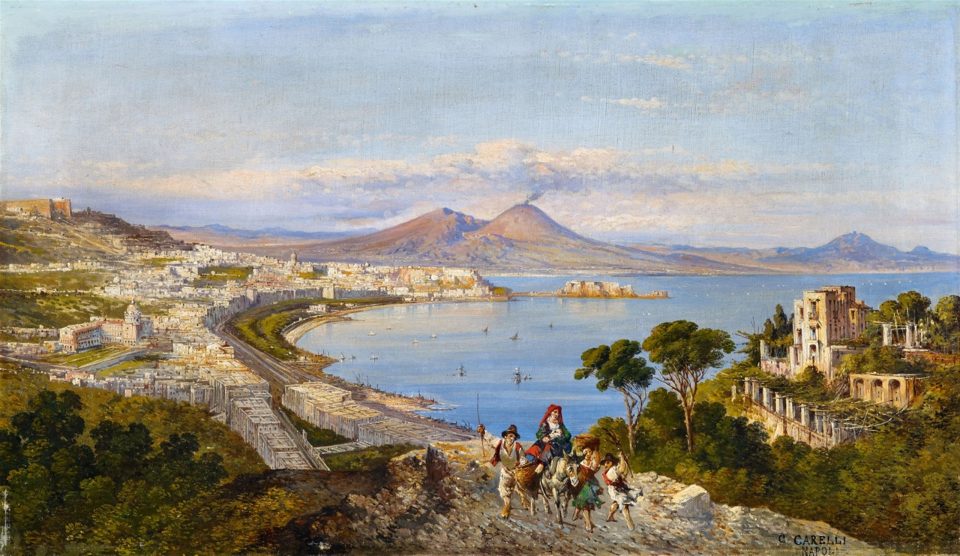
THE SCHOOL OF POSILLIPO
RIPANO EUPERINO| ROME, FEBRUARY 7 2025
Publio Vedio Pollione, a wealthy freedman who became a Roman knight due to his fortune, was very close to Augustus. Upon his death, he left the emperor his Roman villa on the Esquiline Hill and the magnificent country villa in Posillipo. Augustus demolished the first to build the Portico of Livia but kept the second, which became the Imperial Villa. The villa enjoyed a stunning view. The Posillipo hill, not far from the city, only became an integral part of Naples in 1925. The place was so beautiful that participants of the Grand Tour never failed to visit. Neapolitan painters also flocked there, creating landscape works as souvenirs of the area’s beauty in exchange for generous payments.
Initially, these artists were disdainfully referred to by academics as the “School of Posillipo” because they merely copied views. However, the demand for high-quality commissions, especially from the English, led to a significant improvement in their work and an increase in the number of artists.
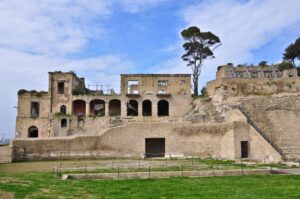
(The Villa of Pausilypon)
Anton Sminck van Pitlo (1790–1837), a Dutchman by birth, studied in Paris and Rome. He later traveled to Naples as a guest of the Russian diplomat Count Gregorio Orloff. After numerous journeys to Sicily, Switzerland, and Rome, he decided to settle in Naples, then a cosmopolitan metropolis, and changed his name to Pitloo. In 1820, he opened a painting school in his house in Chiaia.
Pitloo abandoned the classical landscape painting style, which was based on the reproduction of reality, and instead adopted a Romantic approach. He emphasized light and color, giving space to the emotions perceived through direct observation.
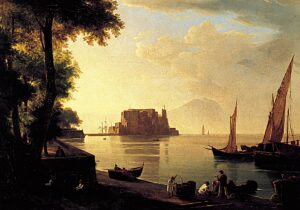
(Anton Sminck Van Pitloo – Castel dell’Ovo from the Beach)
Pitloo was influenced by Corot in the technique of “paper on canvas” and by William Turner, who represented for him “a new way to deepen the problem of light without disturbing the order established by his natural vision.”
Pitloo died in 1837 in Naples during the second devastating wave of the cholera epidemic. His students were numerous, and many of them embraced landscape painting. Among them were Salvatore Fergola, Gabriele Smargiassi, Achille Vianelli, and especially Giacinto Gigante (1806–1876).
Giacinto, the son of painter Gaetano Gigante, was born on the Rampa di Sant’Antonio in Posillipo. By the age of 12, he was already painting landscapes and portraits. In 1820, he began attending the studio of Jacob Wilhelm Huber, a German academic and landscape painter, who introduced him to the use of the “camera obscura.” In 1821, after Huber left Naples, Giacinto became a student of Pitloo, and in 1824, he won the second-class landscape prize.
His time at the school connected him with Naples’ international artistic environment, allowing him to meet great painters such as William Turner and Christian Dahl, who were in Naples at the time. The characteristics of Gigante’s painting style were similar to those of other artists trained by Pitloo who formed the School of Posillipo. Their bonds were so strong that numerous marriages took place among their sisters.
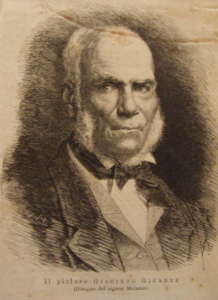
(Portrait of Giacinto Gigante)
Between 1829 and 1832, Giacinto focused heavily on graphic art, contributing to the project “Pictorial Journey through the Kingdom of the Two Sicilies.” He also became friends with the Russian painter Scedrin, through whom he gained access to circles within the Russian embassy and the Neapolitan aristocracy. In 1837, after Pitloo’s death, Gigante moved into his house on Vico Vasto in Chiaia.
In 1848, he received a royal commission to create drawings of Gaeta. His high reputation led him to be appointed honorary professor at the Academy of Fine Arts of Naples in 1851, as well as a teacher to the royal princesses. In the 1860s, he painted Chapel of San Gennaro in the Cathedral during the Miracle of the Blood on commission from King Victor Emmanuel II. The painting was sent to the 1867 Universal Exposition in Paris.
Giacinto Gigante died in Naples on November 29, 1876. His works are exhibited at the Gallery of the Academy of Naples, the National Gallery of Modern Art in Rome, the Gallerie d’Italia in Naples, and the National Museum of Capodimonte.
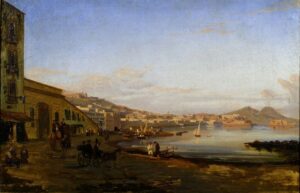
(Giacinto Gigante – Marina di Posillipo)